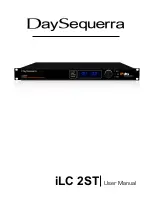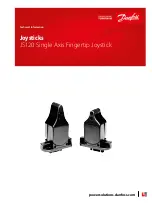
8
iLC2ST User Manual
Measuring Loudness
Human perception of the sensation of an audio signal is properly called “loudness”. As early as 1933,
research by Fletcher and Munson showed that human hearing sensitivity is largely based upon the
frequency of the sound, as well as the sound pressure level (SPL). As humans do not hear sound using
standard measures of intensity, measuring loudness based upon SPL or the root mean square (RMS)
voltage of the electrical signal will not agree with human perception. The Fletcher/Munson Equal
Loudness Curves show the limits human sensitivity of certain frequencies, especially low frequencies
(bass) at lower sound levels (Fletcher & Munson, 1933).
In order to create a loudness measure that more accurately represents the human perception of
loudness, frequency weighting (or equalization curves) are placed ahead of power measurements. This
introduces the measures Leq(A), Leq(B), Leq(C) and Leq(M) – with ‘Leq’attempting to relate the
‘L’oudness of an ‘eq’uivalent amount of energy in a standard signal, typically a 1 kHz sine wave. The
most current weighting standard, ITU-R BS.1770 produces results known as LKFS that are referenced
to a dB FS scale. While certain Leq(x) measures match more closely to human loudness perception
than traditional SPL or RMS measurements, there are still many broadcast content types that cannot be
measured correctly with a Leq(x) or LKFS weighting method.
For example, a narrowband signal may be perceived to sound softer than an equally intense wideband
sound, depending on the relationship between rendering level, absolute threshold and signal content.
Additionally, content with large amounts of low-frequency energy is often inaccurately measured by
BS.1770 due to heavy low-frequency roll off (see weighting curves). This measurement will often vary
from a subjective measure, especially in the short term; however this variance is acceptable in a long-
term measurement, as the values are smoothed over many seconds, minutes or hours. Small
deviations between the instantaneous perception of loudness is often acceptable when using a meter
solution to measure the loudness, as the meters usually offer an audio visualization method that human
operators can use. Combined with their ears, the operator can make any decisions about any corrective
action required.
Fletcher/Munson Equal Loudness Curves
Содержание iLC 2ST
Страница 1: ...iLC 2ST User Manual...









































